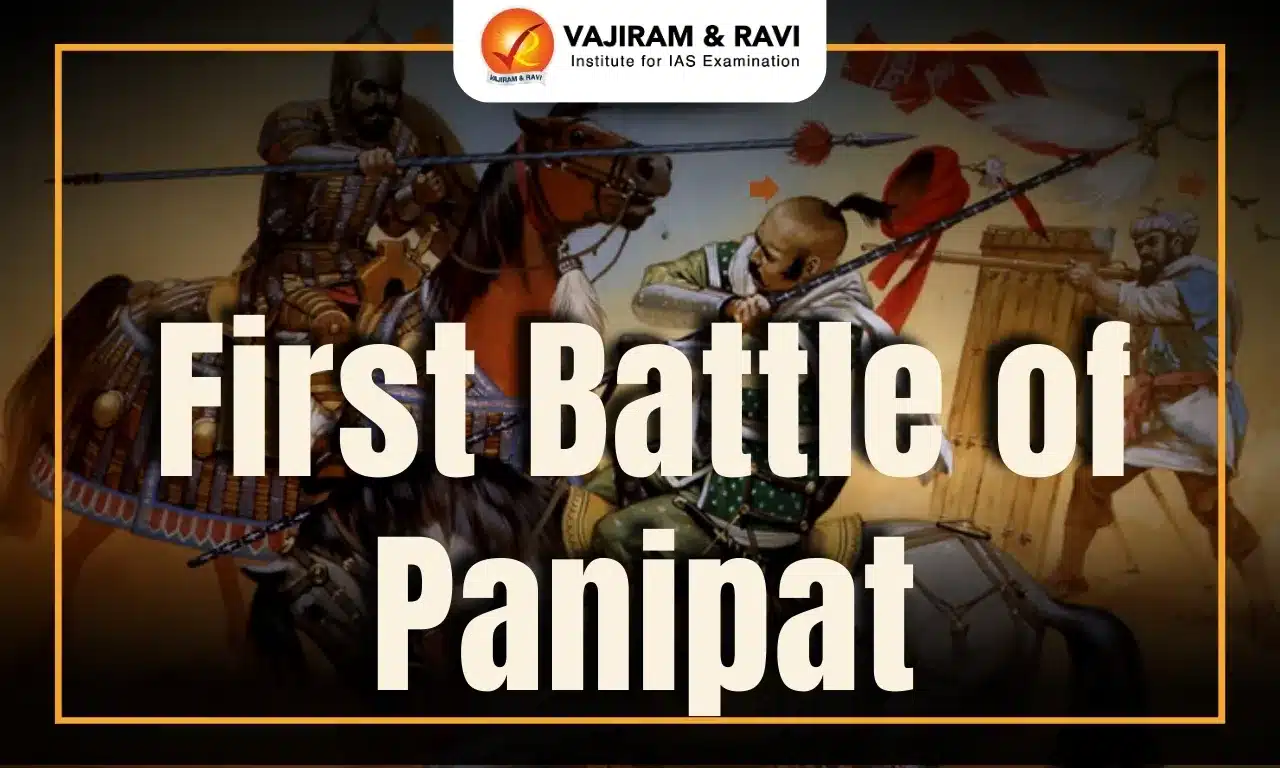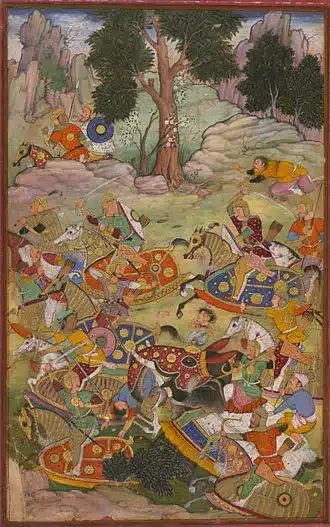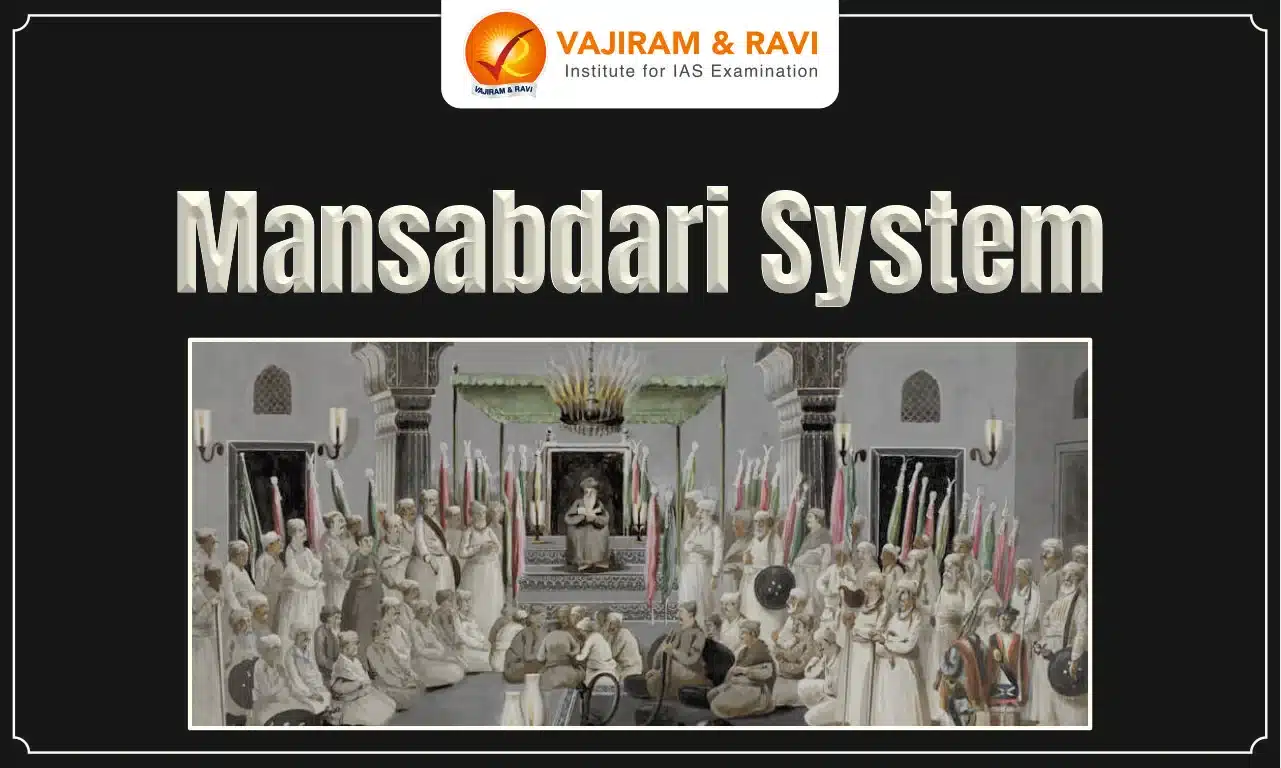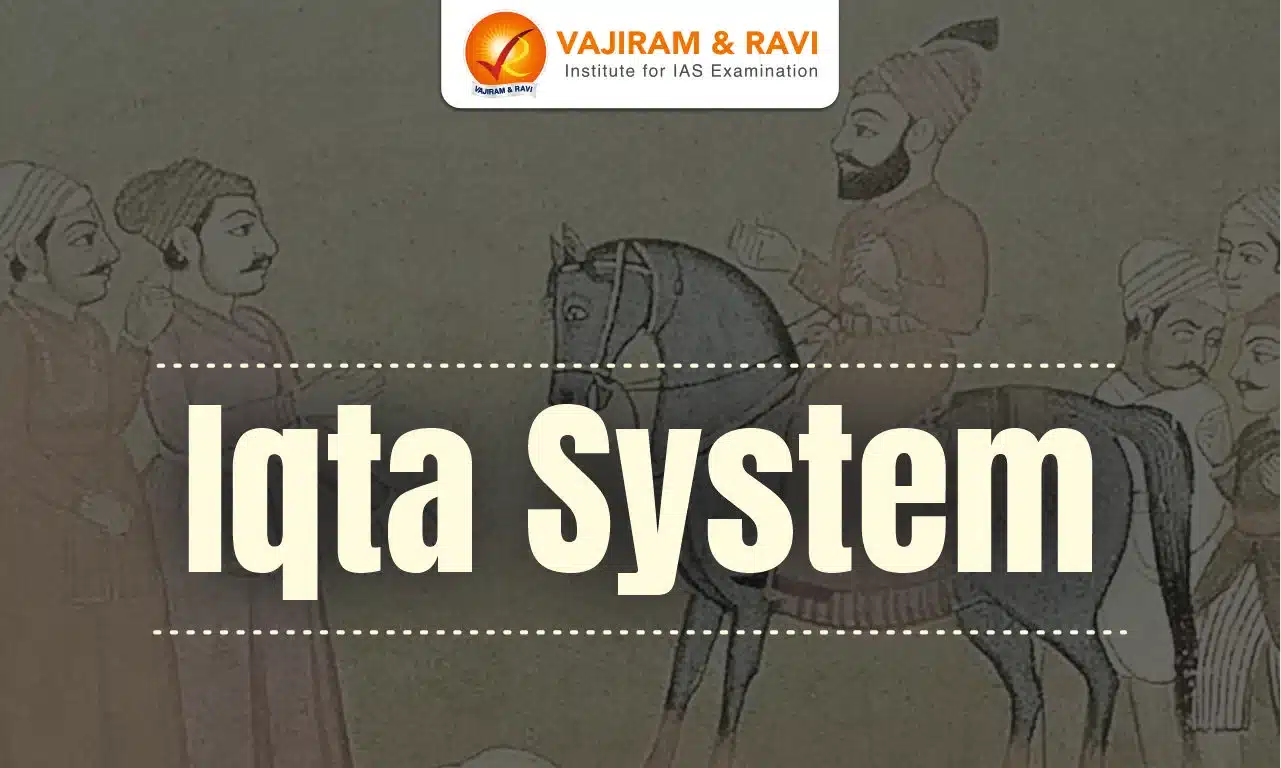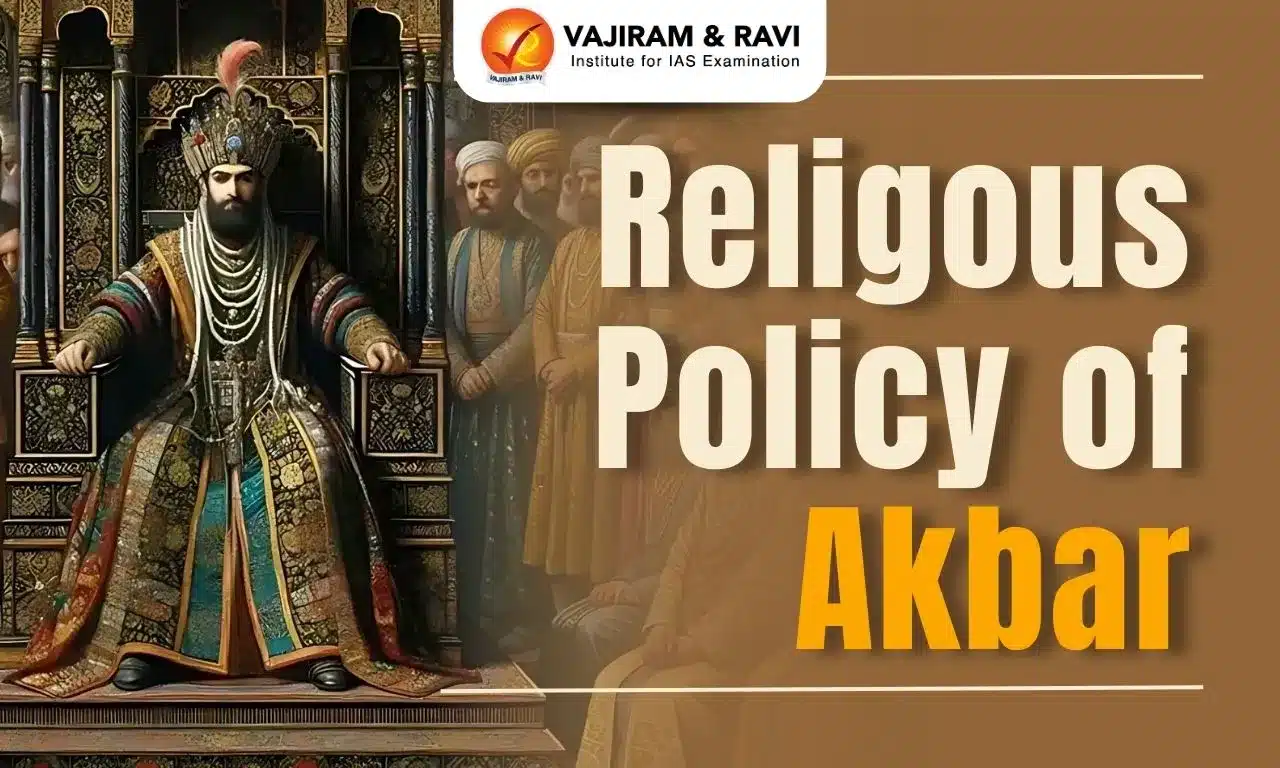First Battle of Panipat, fought between Babur and Ibrahim Lodi, the Sultan of Delhi, on 21 April 1526 near the town of Panipat, was a decisive conflict. First Battle of Panipat saw Central Asian invader Babur using advanced warfare technology, including gunpowder firearms and cannons, while Ibrahim Lodi's larger army struggled to withstand Babur's tactics, resulting in a significant loss for both sides.
First Battle of Panipat led to the downfall of the Delhi Sultanate and paved the way for the establishment of the Mughal Empire in India. The outcome of the First Battle of Panipat demonstrated Babur's military genius while also ushering in a new era in Indian history, fundamentally altering the political landscape.
First Battle of Panipat Overview
First Battle of Panipat, fought on 21 April 1526 in northern India, was a decisive clash between Zahir-ud-din Babur and Ibrahim Lodi, the last ruler of the Lodi dynasty. This battle marked the foundation of the Mughal Empire and introduced firearms and field artillery to Indian warfare. It stands as one of the earliest engagements involving gunpowder weaponry in the subcontinent.
- Location: The battle was fought near Panipat, a village in Haryana. The region has also witnessed numerous battles:
- The Second Battle of Panipat was fought on 5 November 1556 between Akbar and Emperor Hemchandra Vikramaditya, also known as Hemu.
- The Third Battle of Panipat (1761) was a significant battle between the Maratha Empire and Afghan King Ahmad Shah Durrani.
- Historical Significance: Panipat had many empire-shaking battles because it is located on the historic Grand Trunk Road, a strategic location for controlling trade and invasions.
- It is 100 kilometers north of Delhi, the historical seat of power for many dynasties. The flat terrain of Panipat allows for large-scale battles.
- Comparative Strengths of the Armies: Babur commanded an army of approximately 15,000 soldiers, equipped with 20 to 24 pieces of field artillery. In contrast, Ibrahim Lodi’s force consisted of about 30,000 to 40,000 soldiers and over 1,000 war elephants, though his total numbers included non-combatants.
First Battle of Panipat Background
First Battle of Panipat, fought on 21 April 1526, marked a crucial turning point in Indian history. Before this battle, Babur, the Timurid ruler of Kabulistan, had a long history of struggle to establish his rule. After losing Samarkand for the second time, he turned his attention to Hindustan, reaching the Chenab in 1519 to conquer Punjab and fulfill his ancestor Timur’s legacy.
- Ibrahim Lodi's Declining Empire: By 1524, most of North India was under the control of Ibrahim Lodi, but his empire was weakening due to internal defections and instability.
- Invitation from Rebel Leaders: Babur received invitations from Daulat Khan Lodi (Governor of Punjab) and Ala-ud-Din (Ibrahim’s uncle) to challenge Ibrahim Lodi's rule.
- Ambassador’s Detention: Babur sent an ambassador to Ibrahim, claiming his rightful claim to the throne, but the envoy was detained in Lahore and released after several months.
- March to Lahore (1524): Babur began his march to Lahore in 1524 but found that Daulat Khan had been ousted by Ibrahim Lodi's forces.
- Defeat of the Lodi Army: Upon reaching Lahore, Babur faced and routed Ibrahim's army. He burned Lahore for two days as a punitive measure.
- Support for Rebel Leaders: Babur placed Alam Khan (another rebel uncle of Ibrahim) as the governor of Dipalpur but soon had to provide him with support to challenge Lodi’s forces
- Failed Attempt to Secure Punjab: Babur realized that Ibrahim Lodi would not allow him to take control of Punjab, leading to further strategic actions that culminated in the First Battle of Panipat.
First Battle of Panipat Course
First Battle of Panipat was marked by strategic preparation, effective use of artillery, and a devastating flank. The course of battle is discussed in detail below:
- Babur’s Strategic Positioning (Tulughma): Babur secured his right flank near Panipat and dug a trench with tree branches on his left. He arranged 700 carts in the center with matchlock men between them, referred to as the "Ottoman device”, inspired by its earlier use by the Ottomans during the Battle of Chaldiran.
- Ibrahim Lodi’s Response: Ibrahim’s army found the approach too narrow for a direct attack, and while redeploying, Babur quickly flanked the Lodi forces, causing confusion and retreat.
- Artillery’s Impact and Lodi’s Death: Babur’s cannon fire frightened Lodi’s elephants, causing them to trample their men. Ibrahim was killed while attempting to retreat, and 20,000 of his soldiers were killed in the battle.
First Battle of Panipat Babur’s Tactics
First Battle of Panipat was not only a clash of armies but also a demonstration of Babur’s innovative military tactics, which proved crucial to his victory.
- Introduction of Tulughma and Araba: Babur’s tactics included the use of Tulughma, a method of dividing the army into several units—Left, Right, and Centre—each of which was further split into Forward and Rear divisions.
- This allowed for flexibility and the ability to surround the enemy.
- The Centre Forward division was supported by Araba, which involved positioning carts in rows, tied together with animal hide ropes, facing the enemy.
- Effective Use of Artillery: Babur’s artillery, including guns and cannons, was crucial to his victory. The carts (araba) shielded the artillery while enabling maneuverability.
- Cannons behind these carts were protected by movable mantelets, allowing Babur’s forces to fire with minimal risk, reposition the cannons, and adjust the nozzles efficiently.
First Battle of Panipat Outcome
First Battle of Panipat marked the end of the Lodi Dynasty and the Delhi Sultanate, signaling the beginning of the Mughal Empire’s rule in India. Although Babur emerged victorious, had Ibrahim Lodi survived a little longer, he might have claimed victory, as Babur’s forces were on the verge of exhaustion and lacked reserves. After the war, most of Ibrahim’s supporters switched their allegiance to Babur, recognizing him as the new ruler of Delhi.
First Battle of Panipat Significance
First Battle of Panipat holds great significance in the history of the Indian subcontinent. The First Battle of Panipat led to the establishment of the Mughal Empire in India, popularised the use of gunpowder in battles, and paved the way for future battles in Panipat, among others. The significance is discussed in detail below:
- Foundation of Mughal Empire: It led to the foundation of the Mughal Empire, which shaped the region’s history for over two centuries until its defeat by the British Raj in 1858.
- Use of Gunpowder: The battle showed the prowess of gunpowder during battle and led to its massive use in future battles.
- Solidified Regime of Babur: Babur's decision to remain in India after his victory led to key battles, including the Rana Sanga of Mewar, which challenged his rule, and the Battle of Khanwa in 1527 and the Battle of Chanderi in 1528, solidifying his control over the region.
First Battle of Panipat UPSC PYQs
Q.1 The third battle of Panipat was fought in 1761. Why were so many empire-shaking battles fought at Panipat? (UPSC Mains 2014)
Q.2 Consider the following: (UPSC Prelims 2015)
The arrival of Babur into India led to the
- Introduction of gunpowder in the subcontinent
- Introduction of the arch and dome in the region’s architecture
- Establishment of Timurid dynasty in the region.
Select the correct answer using the code given below.
(a) 1 and 2 only
(b) 3 only
(c) 1 and 3 only
(d) 1, 2 and 3
Ans. (b)
Last updated on December, 2025
→ Check out the latest UPSC Syllabus 2026 here.
→ Join Vajiram & Ravi’s Interview Guidance Programme for expert help to crack your final UPSC stage.
→ UPSC Mains Result 2025 is now out.
→ UPSC Notification 2026 is scheduled to be released on January 14, 2026.
→ UPSC Calendar 2026 is released on 15th May, 2025.
→ The UPSC Vacancy 2025 were released 1129, out of which 979 were for UPSC CSE and remaining 150 are for UPSC IFoS.
→ UPSC Prelims 2026 will be conducted on 24th May, 2026 & UPSC Mains 2026 will be conducted on 21st August 2026.
→ The UPSC Selection Process is of 3 stages-Prelims, Mains and Interview.
→ UPSC Result 2024 is released with latest UPSC Marksheet 2024. Check Now!
→ UPSC Prelims Result 2025 is out now for the CSE held on 25 May 2025.
→ UPSC Toppers List 2024 is released now. Shakti Dubey is UPSC AIR 1 2024 Topper.
→ UPSC Prelims Question Paper 2025 and Unofficial Prelims Answer Key 2025 are available now.
→ UPSC Mains Question Paper 2025 is out for Essay, GS 1, 2, 3 & GS 4.
→ UPSC Mains Indian Language Question Paper 2025 is now out.
→ UPSC Mains Optional Question Paper 2025 is now out.
→ Also check Best IAS Coaching in Delhi
First Battle of Panipat FAQs
Q1. When was the First Battle of Panipat fought?+
Q2. What was the significance of the First Battle of Panipat?+
Q3. Where did the First Battle of Panipat take place?+
Q4. Who won the First Battle of Panipat?+
Q5. What was the outcome of the First Battle of Panipat?+



